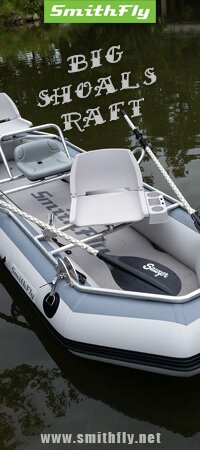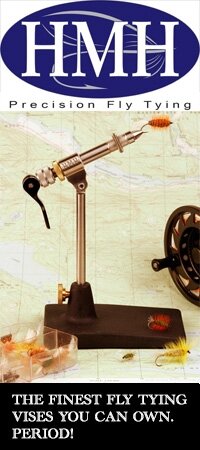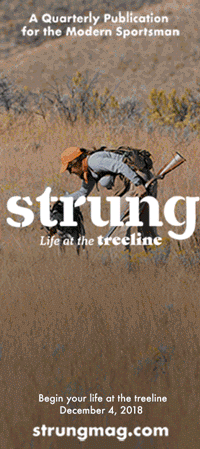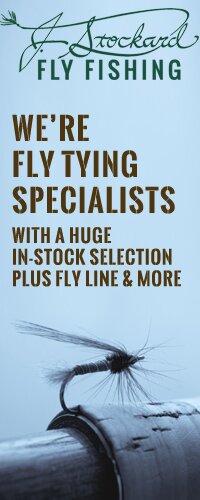
The Lower Sac was in rare form. All day long we’d been nymphing 16-20 inch fatty rainbows from her wide riffles and endless current seams, sweating like Arizona roofers in the 100-degree July heat and hardly believing the numbers we were hooking. It’s not always like that, but it sure is memorable when it is. Then, as the sun dipped low on the mountainous horizon, the fish began to porpoise on the surface, inhaling dry caddis…and I groaned in dismay. For the 3 decades I’ve thrown dry caddis at these summertime risers, my success rate has been wildly erratic, causing my confidence level to follow suite. This twilight surface “grab” is pretty dependable – there are almost always reaches of the river where the big trout come up for 30-60 minutes; targeting trout to throw to has rarely been a problem. But unlike other fisheries, including some pretty darned technical ones, the Lower Sac has always toyed with me. One night I’ll land half a dozen fish, and be on top of the world, certain I’ve finally figured out the fly mystery; two nights later, same number of fish working, same pattern, and I can’t touch a fish. What is the deal??!!
One night in early spring 2007, I off-handedly whipped up a couple “new” dries to try the following evening…it had occurred to me the one life stage of caddis I’d rarely even considered before had nothing to do with a nuance of emergence, but was rather at the reverse end of the cycle -a dead or dying insect. I figured the body needed to emulate a “wasted” natural’s abdomen – wispy, yet with a touch of sparkle for what little trapped air might still be left. A thread body ribbed with a strand of Flashabou, all coated in a coat of Softex. I wanted an abdomen that hung down in the surface film, rather than float high and dry on top. I really felt a down-wing profile could be a key, and from “retired” caddis I’d collected, I wanted those wings to be extremely frail and somewhat translucent, not opaque or with a pronounced profile. I used Z-Lon yarn, each sparse wing tied tight against a peacock dubbing lump to make sure the yarn didn’t simply collapse against the hook shank when wet. I wanted the wings to be in, or even just below the water’s surface, the same as with my mayfly Profile Spinners. Finally, I wanted a parachute hackle, and a visible backwing silhouette – so I borrowed Ralph Cutter’s ingenious idea from his wonderful E/C Caddis, and parachuted an elk hair wing.
 I looked at the finished product – frankly without a lot of enthusiasm, due to it’s unremarkable appearance – and threw them into the box, in case I wanted to try something new. The next evening, I started with my standard favorites, but to little avail – the fish were crashing the surface pretty aggressively, but not to what I was offering. More out of defeat than hope I reached in and plucked one of the new little”cadaver caddis” from the box, and knotted it on. First cast – slurp, and hookup! My friend watched mutely from upstream, slightly surprised. Convinced it was a fluke, that I must simply have just made the ten thousandth cast necessary to get my token “lucky” grab, I dried the bug on my shirt, picked a new target, and cast again. Slurp – I came tight again!! Now my heart-rate started to elevate slightly, and I noticed my fishing partner begin to edge slowly down towards me. Still not convinced (30 years!!), I threw to yet another boil 20 feet from my rod tip, and slurp, it happened again – 3 fish in 3 casts!! Long story short, I hooked 10 fish in one hour that night and missed several other takes, literally rising every single trout I had to cast to. Amazing. Even more astounding, the fly continued to produce at this torrid pace for the rest of the summer – evening after evening my confidence soared as I knew I had a good chance of hooking nearly every trout I put a good cast on…it was like a dream. Then, in October, another friend and I spent our annual 2 weeks in Montana; each cloudy afternoon on the Firehole swarms of baetis would float lightly down the gentle flats of Biscuit Basin, the noses of pods of rainbows and browns interrupting their journey. It was demanding to the max, with the fish immediately going down at the merest hint of drag, or a missed strike. We felt fortunate to take one fish out of each pod before they wised up to our flies, and we’d have to go find more fish. Just on a fluke one morning, as the trout were confidently sucking in baetis spinners (but completely ignoring my imitations), I took off my #22 paradun and tied on the new caddis…don’t ask, it was just one of those strange decisions based on very little coherent thought. I proceeded to not only catch a fish on the #16 dry, I literally hooked all 8 fish in the pod, one after another!! Totally blown away – could this be a magic fly? – I moved down to the next pod, and stuck over half of them…unbelievable! I realized then that this pattern was not only something REALLY special as a caddis imitation, it had something which attracted fish even in situations where I wouldn’t have imagined.
I looked at the finished product – frankly without a lot of enthusiasm, due to it’s unremarkable appearance – and threw them into the box, in case I wanted to try something new. The next evening, I started with my standard favorites, but to little avail – the fish were crashing the surface pretty aggressively, but not to what I was offering. More out of defeat than hope I reached in and plucked one of the new little”cadaver caddis” from the box, and knotted it on. First cast – slurp, and hookup! My friend watched mutely from upstream, slightly surprised. Convinced it was a fluke, that I must simply have just made the ten thousandth cast necessary to get my token “lucky” grab, I dried the bug on my shirt, picked a new target, and cast again. Slurp – I came tight again!! Now my heart-rate started to elevate slightly, and I noticed my fishing partner begin to edge slowly down towards me. Still not convinced (30 years!!), I threw to yet another boil 20 feet from my rod tip, and slurp, it happened again – 3 fish in 3 casts!! Long story short, I hooked 10 fish in one hour that night and missed several other takes, literally rising every single trout I had to cast to. Amazing. Even more astounding, the fly continued to produce at this torrid pace for the rest of the summer – evening after evening my confidence soared as I knew I had a good chance of hooking nearly every trout I put a good cast on…it was like a dream. Then, in October, another friend and I spent our annual 2 weeks in Montana; each cloudy afternoon on the Firehole swarms of baetis would float lightly down the gentle flats of Biscuit Basin, the noses of pods of rainbows and browns interrupting their journey. It was demanding to the max, with the fish immediately going down at the merest hint of drag, or a missed strike. We felt fortunate to take one fish out of each pod before they wised up to our flies, and we’d have to go find more fish. Just on a fluke one morning, as the trout were confidently sucking in baetis spinners (but completely ignoring my imitations), I took off my #22 paradun and tied on the new caddis…don’t ask, it was just one of those strange decisions based on very little coherent thought. I proceeded to not only catch a fish on the #16 dry, I literally hooked all 8 fish in the pod, one after another!! Totally blown away – could this be a magic fly? – I moved down to the next pod, and stuck over half of them…unbelievable! I realized then that this pattern was not only something REALLY special as a caddis imitation, it had something which attracted fish even in situations where I wouldn’t have imagined.
Bottom line, my flies are usually highly designed, with lots of thought-out triggers, and I try hard to make them look really nice, as well. This pattern was barely more than an afterthought, admittedly with a specific design trigger, but simply put, it’s nothing special to look at!! Don’t let that fool you, like it normally would have me – this bug truly is something special, in my experience. If you have a good caddis hatch (or dying egg-layer swarms) on a stream near you, give this a shot…shoot, if you just have FISH in a local river, tie one of these on and dead-drift it down, I think you may be pleasantly surprised!
Mike Mercer

Mercer’s Missing Link (Tied by Umpqua Feather Merchants)
Hook: TMC 102Y, sizes #12-18
Thread: UNI 8/0 camel
Abdomen: UNI 8/0 camel thread, ribbed with strand of pearl Flashabou, coated with Softex
Thorax/Wing Splitter: small clump of Ice Dub, UV Brown
Down Wings: Z-Lon, dark dun
Up Wing: Elk body hair
Hackle: dark dun dry fly hackle, parachute-style




















